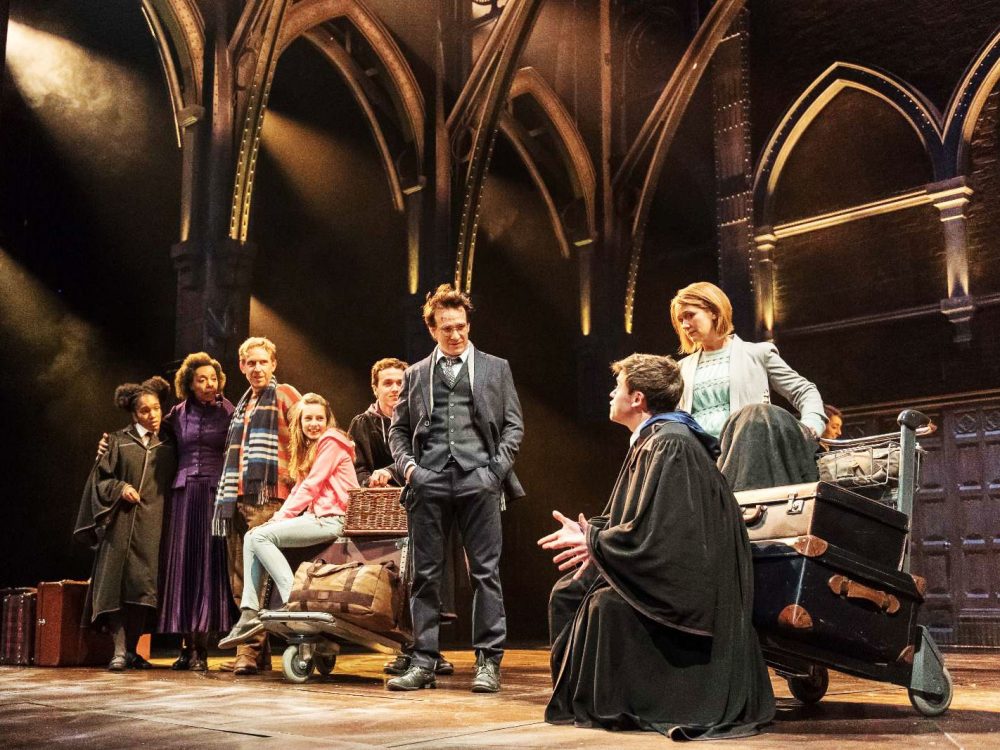“While some submitted to a fate of rereading, others went online to quench their burning thirst for more of Harry’s adventures and take part in the tradition of fan fiction.”
On Fan Fiction
Following the critically acclaimed conclusion to the Harry Potter series, fans remained ravenous for more. While some submitted to a fate of rereading, others took to the Internet to quench their burning thirst for more of Harry’s wizarding adventures. J.K. Rowling, herself, led attempts to help remedy this need through the creation of Pottermore, a community for Harry Potter fans. Even with a dedicated online community, fans continued to take part in the literary tradition of fan fiction. The “Potterheads” as they affectionately refer to themselves, have consistently taken part in the creation of side stories situated in the Harry Potter universe. With platforms like Pottermore, and the Internet as a whole, creating such adaptations has become exceptionally easy.
The literature written by and for Potterheads in the Harry Potter universe is classified as fan fiction. According to Merriam-Webster, fan fiction refers to “stories involving popular fictional characters that are written by fans and often posted on the Internet.”[1. Merriam-Webster, s.v. “fan fiction,” accessed April 6, 2016, http://www.merriam-webster.com/dictionary/fan%20fiction.] People in fan communities encourage each other to explore their favorite authors’ environments, create new situations for characters to navigate, or even provide new perspectives to the already established canon. In the Potterhead community, the fixation on fan fiction only continued with the conclusion of the main series.

As a genre, fan fiction would be characterized with a certain ephemerality, often only existing in transient ways. From pre-Internet scribbles in a notebook to posts on sites like Fanfiction.net, the genre would not be considered concrete. Moreover, it is a genre in which borrowing elements from other pieces of literature is core. While borrowing (or adapting) ideas have always played a part in the creation of new arts, fan fiction involving a more streamlined form of borrowing. In the same vein, the very thing that makes fan fiction unique often leads critics to refer to it as a lower art form.
In many cases, this critique refers to technically weak writing regarding any specific series characters. These works often are posted online with little regard to form and do not add anything to the experience of enjoying a particular series. In this case, “bad” fan fiction would be something mechanically subpar. The writing lacks mastery over style and tone. This type of writing does not elevate its source material beyond where it already reached. On the other hand, “good” fan fiction would do the opposite. Successful fan fiction incorporates themes from its source material and presents it to readers in a different way. It is well-crafted and comments on the original. Admittedly, this binary is subjective. Is there truly a way to discern good fan fiction from the bad? And, if it exists, does the good fan fiction constitute art?
This is where the tension regarding fan fiction lies. While no concrete answer may be reached at this point, part of the issue seems to lie in the genre’s age. As a relatively new form, fan fiction will take some time to be able to be recognized a valid. Furthermore, fan fiction’s “low art” status could be attributed to its inexperienced writers. Being a relatively new genre, born out of a relatively new technology, fan fiction writers need to mature with their form. Despite this, the genre is relatively easy to “break into,” as it is primarily self-published. It also benefits from the popularity of its parent franchises. In the case of Harry Potter, over eighty-thousand posts are related to the franchise on Fanfiction.net. This number continues to grow daily.
While a relatively new term, fan fiction, as a genre, captures the sentiment in many famous works that show heavy inspiration from other already established works. Despite this similarity, fan fiction and such literature forms are not the exact same. Both draw similar inspiration but fan fiction is intended to be consumed in conjunction with its source material. While these examples are not necessarily fan fiction per se, they embody the traits innate to the form. Classic examples include Jean Rhys’s Wide Sargasso Sea based on Charlotte Bronte’s Jane Eyre. Rhys’s piece is based entirely on Bronte’s canon. Instead of penning a blog post in where Bertha is the star, Rhys creates a world where the racial and colonial aspect of Jane Eyre is explored. Wide Sargasso Sea strays away from superficially expanding on Jane Eyre. Instead, it sheds light on aspects of the original, transforming the base material into something completely different. In some ways, Rhys’s work transcends the limits of the original.
Successful pieces of fan fiction transcend classic pieces of literature, too. In more recent times, pieces of fan fiction that have gone beyond the limits the books they were based on. J.K. Rowling and fans seemed to share the same desire for continuation in the Potter universe. This desire culminated in Harry Potter and the Cursed Child. The two-part play offers fans a look into life in the Harry Potter universe after the series. It focuses on the coming-of-age of Harry’s son and his magical studies.

The Cursed Child is an interesting case when seen as a work of fan fiction. While J.K. Rowling is credited with being involved in its creation, the play is written by playwright, Jack Thorne. It was a collaboration by a fan, under Rowling’s close supervision. Like Rhys’s work, it serves as a window into another aspect of its parent franchise. Unlike most fan fiction, which is only enjoyed as a non-canon experience, The Cursed Child has joined its inspiration as part of the Potter canon.
Ultimately, fan fiction offers readers and creators additional ways to interact with their favorite pieces of literature. It subverts the established relationship between consumer and creator, allowing fans an additional way to interact with their beloved universes. In a few cases, these new works can become more than a blog post and grow into their own standalone entities. In the case of The Cursed Child, the fan fiction becomes more than what it was initially written as. More so, as the genre ages, the stigma surrounding it will dissipate, as well.